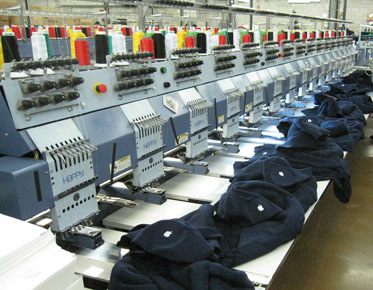An Overview for Embroidery Digitizing Techniques
Embroidery digitizing is a process that transforms an image or design into a digital embroidery file format that can be understood by an embroidery machine. This process entails a variety of techniques and procedures to ensure that the final product meets the desired specifications and is of high quality.
In this article, we will discuss the
embroidery digitizing techniques commonly utilized in the industry, offering an
in-depth overview of each step involved.
Image conversion
The first step in embroidery digitizing is to convert the design or image into a digital file format. This can be done using software such as Adobe Photoshop or Illustrator. The design is scanned or uploaded into the software and then traced and converted into a vector format. The vector format allows the design to be scaled up or down without any loss of quality.
Digitizing software
Once the design is in a vector format, it is imported into a digitizing software. This software is specifically designed for embroidery digitizing and has features that allow the user to create stitches and define the embroidery parameters. The software also allows the user to preview the design and make any necessary adjustments before finalizing the design.
Stitch types
There are three main stitch types used in embroidery digitizing: satin stitch, fill stitch, and running stitch. The satin stitch is used for outlining and is made up of closely spaced stitches that create a smooth and solid line. The fill stitch is used to fill in large areas and can be made up of a variety of stitch types such as zigzag, brick, or spiral stitches. The running stitch is used for outlining and creating fine details and is made up of a series of closely spaced stitches.
Stitch parameters
The stitch parameters define the density, length, and width of the stitches. These parameters are important as they determine the overall quality of the embroidery design. A design with too few stitches will look sparse and lack detail, while a design with too many stitches will look dense and bulky. The length and width of the stitches are also important as they determine the appearance and texture of the final product.
Thread colors
Choosing the right thread colors is crucial in embroidery digitizing. The digitizing software allows the user to select from a wide range of thread colors and match them to the design. It is important to choose thread colors that are as close as possible to the original design as this will ensure that the final product is of high quality.
Testing
Once the design has been digitized, it is
important to test it before it is embroidered onto the final product. This can
be done using a sample swatch or by embroidering a test design onto a similar
fabric. Testing allows the user to make any necessary adjustments to the design
and ensure that the final product meets the desired specifications.
Embroidery digitizing is a complex process
that requires skill and attention to detail. By following the techniques
outlined in this article, the user can create high-quality embroidery designs
that meet the desired specifications. With the help of digitizing software and
a good understanding of stitch types, stitch parameters, and thread colors, the
user can create intricate and detailed designs that are sure to impress.



